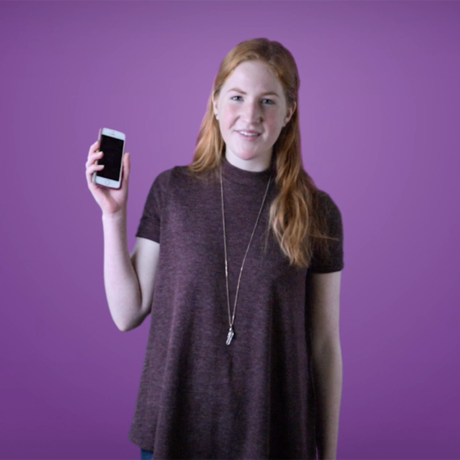Warm-Up (15 minutes)
1. Display the Warm-Up Slide on the screen so that students can read the following:
Nearly 40% of food in the United States is wasted. Because producing food requires a lot of water and energy, it is not just the food that is wasted, but water and energy resources as well. Imagine that a school tries to reduce food waste in their own cafeteria by fining students who do not finish the food they buy for lunch. For every piece of food that is bought from the cafeteria and thrown away instead of being eaten, a student must pay $1.00.
2. Agree/Disagree: Establish one side of the classroom as the ‘Agree’ side and one as the ‘Disagree’ side. Have students stand up and walk to whichever side they identify with given the following prompt: Students should be fined for uneaten food bought from the school cafeteria.
3. Choose students from both sides to defend their position, using the sentence frames ‘I agree…because...’ or ‘I disagree...because…’. List some of their reasons on a chart on the board.
Examples:
I agree because...
- students probably can’t afford to pay fines, so they will be careful to not throw away food.
- students will be more selective and thoughtful about the food that they buy.
- uneaten food is a waste of important resources, and students should be accountable for this.
I disagree because...
- students will choose to bring their lunch more often from home, and the school will lose money.
- students might find other improper ways to dispose of food, such as hiding it or dumping it outside.
- students might eat too much because even though they are full, they don’t want to pay a fine.
4. After a brief discussion and some sharing, give students a chance to switch sides if they have changed their mind.
5. Ask for volunteers to propose an alternate solution to the issue. Examples: Provide to-go containers to students so that they can save uneaten food, or make the plate sizes smaller so that students can’t physically buy as much food.
6. Popcorn style or in groups, have students brainstorm a list of information that would be helpful to have in order to weigh the pros and cons of a proposed solution to a societal problem (an issue that affects people). Examples: Scientific data and evidence, thoughts, opinions, and concerns of the people affected by the issue and the proposed solution, expert advice and knowledge, models, etc.
Nuclear Energy Inquiry (45 minutes)
1. Introduce students to the premise of the activity:
The (fictitious) town of Solutionville is trying to figure out a way to replace their current coal-fired power plants with cleaner and more sustainable energy sources. At a recent town meeting, it was proposed that the town build a nuclear power plant. As a voting citizen of Solutionville, you must decide whether or not you support building a nuclear power plant to provide energy and electricity to homes and businesses.
2. Conduct an anonymous poll to determine how many residents of Solutionville (students in the class) currently support nuclear energy.
Teacher Tip: For a fast, easy, and anonymous poll, you can use clickers or a free app like Socrative which lets students vote using their smartphones, tablets, or a web browser. Apps like Socrative allow you to display the results of a poll to the class in real time.
3. Show students the video Nuclear Energy: Is Fission the Future? and discuss some of the benefits and drawbacks of nuclear energy presented in the video.
4. Divide students into groups of three. Hand out one Student Activity Guide to each student, and briefly go over the instructions. Give students about 30 minutes for research.
5. On the board, draw a chart of benefits and drawbacks of nuclear energy like the one in the Nuclear Energy Reading. Briefly discuss the difference between environmental, social/cultural, and economic dimensions.
6. Ask each group to write the benefits and drawbacks of nuclear energy on sticky notes (one per note) and to put them in the appropriate row/column on the board.
7. Discuss the class chart. Ask students to explain their thinking and to justify their points by citing the sources they read.
-
Did you consider all three of these dimensions when conducting your research and analysis?
-
Do you think it is important or useful to consider all three of these dimensions in weighing a potential solution to a problem? Why or why not?
8. Voting day! Hold a community vote on whether or not to build a nuclear power plant, then present the results of both the initial poll and final voting results to the students. Before taking the official vote, consider allowing one advocate from each side, if interested, to ‘make their case’ in front of the class; students can both practice listening for evidence and listening respectfully.
Wrap-Up and Reflection
9. At the end of the lesson, or for homework, have students write a reflection on what they learned.
-
How easy or hard was it to find credible information about nuclear energy? Did you find any opinions or arguments about nuclear energy that were not backed by evidence or good reasoning? If so, did you still consider them valid considerations?
-
In your research, did you find more people or organizations supporting or more opposing nuclear energy, or did they seem to be equal? Why do you think this was/is?
-
Did anyone change their mind between the initial poll and final vote? What made them change their mind, and why?
- Why is it important to be able to distinguish credible vs. non-credible sources of information?
- How could you encourage people to be more informed voting citizens? (E.g., social media campaign)

